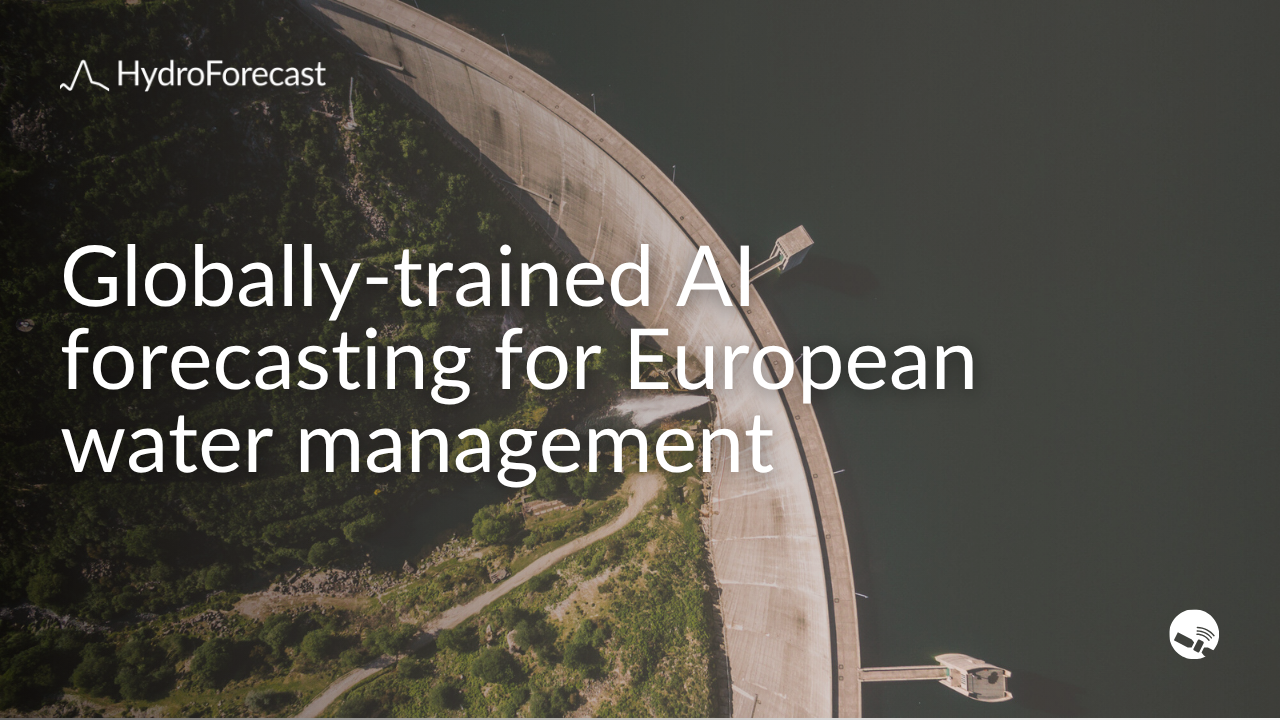
European water managers face a modeling crisis: their catchments are experiencing conditions that fall outside the historical record used to calibrate traditional forecasting tools. The 2021 Ahr Valley disaster that killed over 180 people, Valencia's recent floods, critically low Rhine levels halting navigation for weeks, and Alpine glaciers losing mass at accelerating rates—these aren't isolated incidents but symptoms of hydrological regimes shifting faster than traditional modeling can adapt.
The EU Water Framework Directive and Flood Directive have established comprehensive management requirements, while the European Green Deal directs substantial investment toward infrastructure optimization. Yet the fundamental modeling challenge remains: traditional hydrological models face a hard constraint when basins experience unprecedented conditions.
Physics-based hydrological models learn only from local calibration data. When your Alpine catchment experiences a novel combination—record-low soil moisture after exceptional drought, high-elevation rainfall instead of snowpack accumulation, autumn storm intensity beyond your gauge record—a locally trained model has no analog to reference. It's being asked to extrapolate where it can only interpolate.
This is precisely where globally adaptive AI forecasting delivers operational advantage.
Watch the full webinar: "From Data to decisions: Innovative tools for water management in Europe"
HydroForecast addresses traditional forecasting limitations through a fundamentally different learning architecture. The platform's LSTM neural networks are trained on streamflow and weather data from hundreds of diverse basins spanning subarctic to tropical climates across the world. This global training dataset allows the model to recognize hydrological patterns that may be unprecedented locally but have occurred elsewhere.
Consider a practical hypothetical scenario across the Pyrenees or Alps: Your catchment experiences record-low soil moisture after an exceptional drought. A large autumn storm approaches, and unusually warm temperatures mean rain will fall at elevations where snow would typically accumulate. This specific combination hasn't appeared in your local records.
A traditionally calibrated model has no basis for prediction. HydroForecast, however, has encountered similar dynamics in the Cascade Range, Patagonia, southwestern United States, and New Zealand's Southern Alps. The model identifies the pattern match and generates predictions informed by this broader hydrological experience. This is HydroForecast's foundational advantage: learning from hundreds of diverse basins globally rather than just local historical records.
This architecture proves particularly valuable for Europe's evolving climate signatures:
HydroForecast now operates across eight European countries, including deployments with major operators like ENGIE (France and Portugal) and Landsvirkjun (Iceland). Each implementation combines the model's global learning base with site-specific tuning using local historical data and basin characteristics.
Hydropower optimization: A peer-reviewed study reported revenue improvements of approximately 6% from HydroForecast due to its enhanced forecast accuracy. That ROI can materialize within months for medium to large facilities. For a 100 MW facility, even a 2% improvement typically generates six-figure annual returns.
Glaciated basin performance: In Norwegian and Alpine deployments, HydroForecast incorporates satellite imagery to track snowpack evolution and capture diurnal melt cycles. The model trained on cold-weather gauges in Canada to understand these dynamics—knowledge now applied to European glacial systems where roughly 15% of Norway's hydroelectric output depends on melt-driven runoff. Learn more about HydroForecast performance in glaciated regions.
Complex system handling: The platform successfully manages cascading hydro stations common across river systems, regulated watersheds with multiple operators, and basins with significant agricultural or industrial water demands. The system recognizes when discharges delay due to soil moisture changes or when seasonal irrigation patterns shift expected flows.
Rapid deployment: Implementation typically completes within 90 days versus months-long calibration cycles for traditional physics-based models. The machine learning (ML) architecture requires minimal ongoing recalibration as it learns from operational experience.
Multi-horizon operational capability: European operators use HydroForecast across multiple decision timeframes: hourly forecasts extending two weeks support day-ahead energy trading and operational decisions, while daily seasonal forecasts (90-365 days) inform strategic planning, water allocation, and regulatory compliance with EU directives. The system integrates multiple weather forecast ensembles—including ECMWF, GFS, and regional models—to produce probabilistic outputs with explicit confidence intervals rather than single-point estimates. This uncertainty quantification proves critical for risk-based decision frameworks and demonstrating due diligence under European regulatory requirements.
Systems integration: The platform connects directly to European operational systems through multiple pathways. The HydroForecast API enables bidirectional data exchange, allowing clients to pull forecasts into energy trading platforms and generation scheduling systems while pushing local observations back to enhance accuracy. For organizations using Delft-FEWS—widely deployed across European national water agencies and utilities—a dedicated adapter automates forecast retrieval within existing workflows. HydroForecast also integrates with comprehensive data management platforms like KISTERS' WISKI Hydromet database and DataSphere cloud solution, creating unified environments from sensor acquisition through forecast dissemination. The platform supports multiple languages with compliance to European data sovereignty requirements.
Watch the full webinar: "From Data to decisions: Innovative tools for water management in Europe"
Advanced streamflow forecasting powered by globally-trained AI models addresses a specific operational gap: the increasing frequency of hydrological conditions that exceed or differ fundamentally from your basin's historical patterns. Traditional physics-based models remain valuable for many applications, but they encounter hard limits when the past stops being a reliable guide to the future.
For European water managers—whether optimizing hydropower revenue, managing flood risk under changing precipitation patterns, ensuring water supply reliability through extended droughts, or demonstrating regulatory compliance with EU directives—the relevant question isn't whether these unprecedented conditions will intensify.
The question is what forecasting capability you'll have in place when your next novel event occurs.
To learn more, watch the full webinar, or reach out to our team to discuss how HydroForecast's globally adaptive learning can address your specific operational requirements.